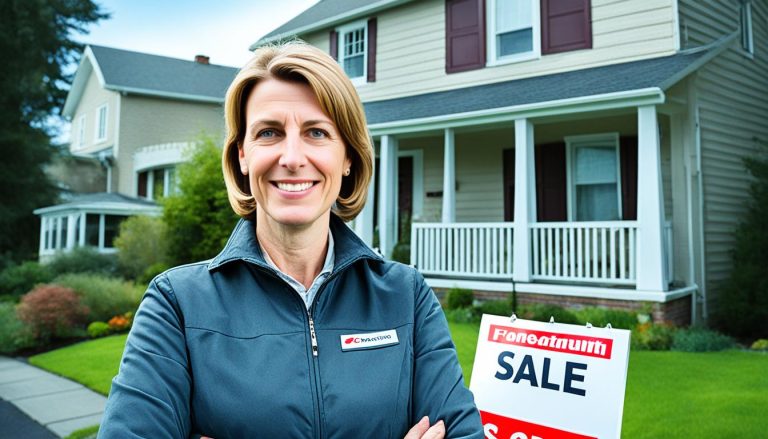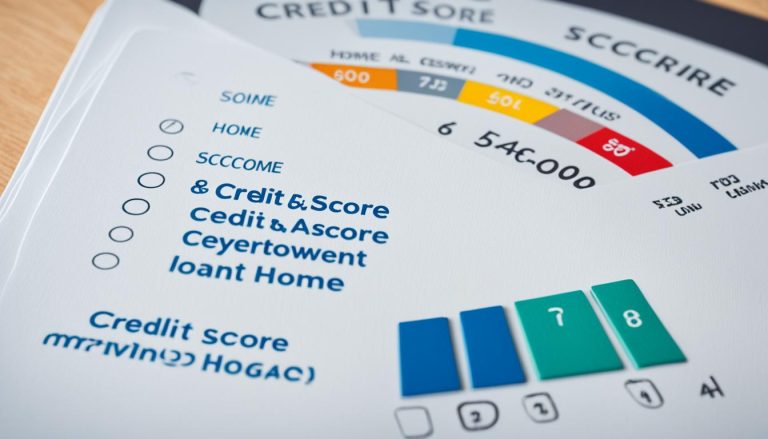Subsidence is a common issue in the UK that can cause significant damage to buildings. If you’re a homeowner, you might wonder if your insurance covers subsidence repairs. We’ll look into UK subsidence coverage, helping you understand your options and how to protect your home.
Subsidence is a complex issue that can affect homeowners greatly. Knowing the causes and signs of subsidence is key to understanding insurance coverage. Being informed helps you make the right choices for protecting your home from this risk.
Understanding Subsidence and Its Impact
Many homeowners in the UK face the issue of subsidence. It’s when the ground under a property moves down. This happens when the soil or rock beneath changes or gets more compact. This can cause cracks in walls and uneven floors, which can be costly to fix.
What is Subsidence?
Subsidence means the ground under a property sinks or settles. This makes the building move down. It can happen for many reasons, like changes in soil, underground cavities collapsing, or losing groundwater. These issues can lead to small cracks or big structural problems, worrying homeowners a lot.
Common Causes of Subsidence
Several things can make subsidence happen in the UK. Here are some main causes:
- Soil shrinkage: Some soils, like clay, shrink when they dry out. This makes them lose volume and sink.
- Leaking pipes: Water leaks can wash away soil, creating empty spaces that make the ground sink.
- Tree root growth: Big tree roots can push against the soil, making it shift.
- Mining and quarrying activities: Old mining or quarrying can leave big holes underground that collapse, causing subsidence.
- Geological factors: Changes in the earth’s structure, like natural cavities collapsing or fault lines moving, can also cause subsidence.
Knowing why subsidence happens helps homeowners understand the risks. They can then take steps to prevent it.
| Cause of Subsidence | Description | Potential Consequences |
|---|---|---|
| Soil Shrinkage | Certain soil types, like clay, can shrink when they lose moisture, leading to a loss of volume and ground movement. | Cracks in walls, uneven floors, and structural damage to the property. |
| Leaking Pipes | Water leaks from underground pipes can wash away the soil, creating voids that cause the ground to sink. | Subsidence, structural damage, and potential water damage to the property. |
| Tree Root Growth | The roots of large trees can grow and expand, exerting pressure on the soil and causing it to shift. | Cracks in walls, uneven floors, and potential damage to the property’s foundation. |
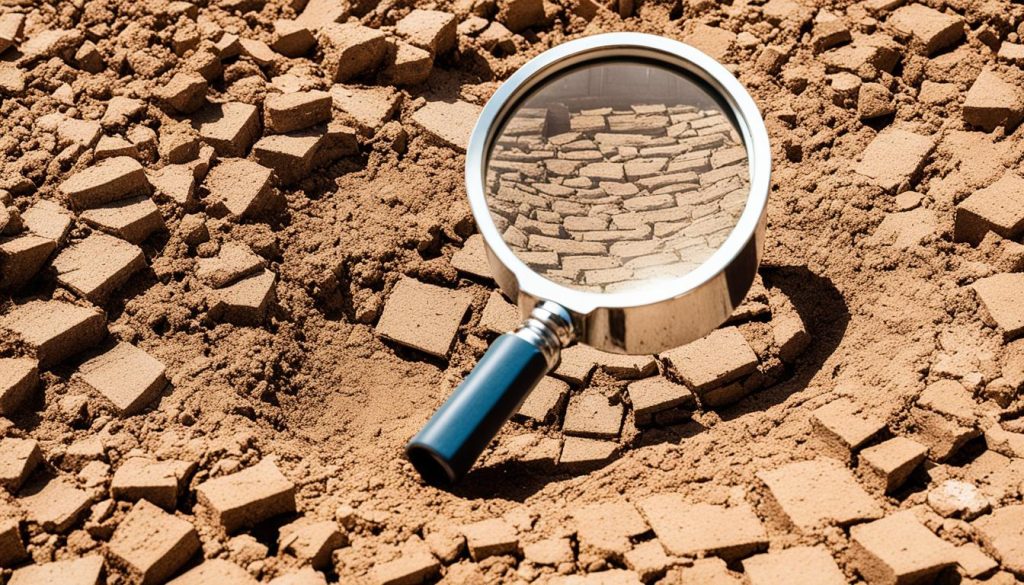
Does Home Insurance Cover Subsidence in UK?
Home insurance in the UK can cover subsidence, but it depends on the policy. Homeowners need to know what’s included and what’s not. They should also look into extra cover options to protect their property.
Standard Subsidence Coverage in Home Insurance
Most UK home insurance policies cover subsidence to some extent. This means they pay for fixing the foundation or other structural parts hit by subsidence. But, each insurer is different, and there might be exclusions or limits.
Subsidence Exclusions in Home Insurance
Some home insurance won’t cover certain subsidence claims. For instance, they might not pay for damage from tree roots or soil shrinkage. Also, there could be a wait before subsidence coverage kicks in, usually about a year after you start the policy.
Additional Subsidence Cover Options
Homeowners worried about subsidence can buy extra cover or riders. This could mean paying for fixing the property, doing landscaping, or external repairs. Some insurers have special subsidence insurance for properties at high risk.
| Coverage | Included in Standard Home Insurance | Additional Subsidence Cover Options |
|---|---|---|
| Structural repairs due to subsidence | Yes, but with limitations | Yes, with higher coverage limits |
| Stabilisation of the property | No | Yes, with specific subsidence insurance |
| Landscaping and external repairs | No | Yes, with additional coverage |
Homeowners should check their insurance policy and talk to their insurer about subsidence coverage. This way, they can make smart choices and keep their property safe.
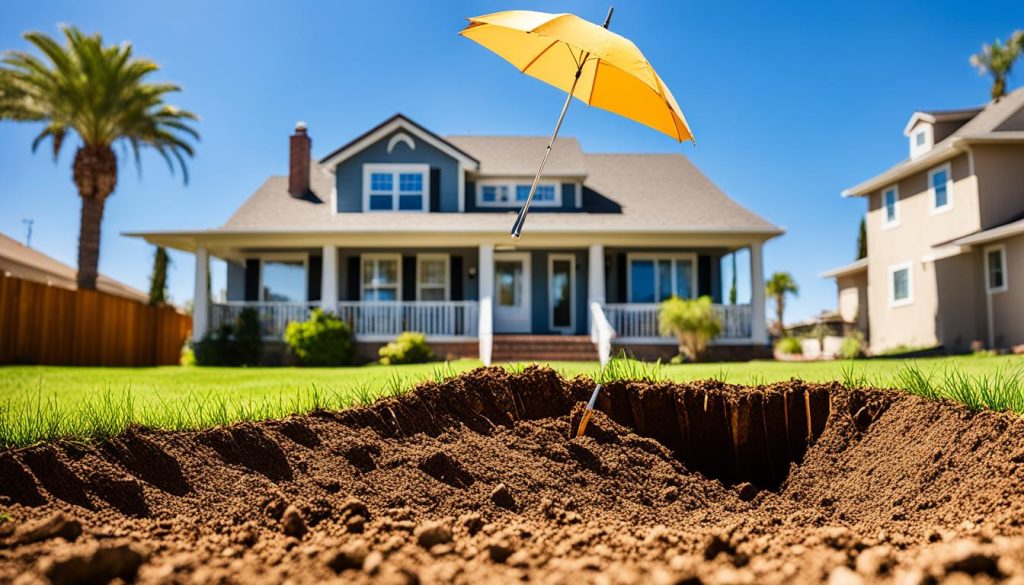
Assessing Subsidence Risk
As a homeowner, it’s vital to know about the risks of subsidence in your area. Some parts of the UK face more subsidence issues than others. Knowing these areas can help you protect your home.
Subsidence Hotspots in the UK
Areas like the South East, East Anglia, and the Midlands are more at risk. These places often have soil that shrinks a lot, like clay. This can make the ground under buildings shift and cause damage.
The latest data shows the top subsidence hotspots in the UK are:
- Essex
- Hertfordshire
- Cambridgeshire
- Buckinghamshire
- Bedfordshire
Homeowners in these areas should watch for subsidence signs. They should also make sure they have good home insurance to cover any damage.
Signs of Subsidence in Your Property
Spotting subsidence early is key. It helps avoid big repair costs later. Look out for these signs:
- Cracks in walls near doors and windows
- Floors that are uneven or slope
- Doors and windows that stick or are hard to open
- Rippling or bulging wallpaper or plaster
- Cracks in outside brickwork or masonry
If you see these signs, get a professional surveyor to check it out. They can figure out the cause and what to do next.
Knowing about subsidence hotspots and spotting signs early helps homeowners act fast. This can reduce the damage from subsidence.
Subsidence Insurance Coverage
Subsidence can worry homeowners a lot. It’s key to know what home insurance covers. Most home insurance policies in the UK offer some protection against subsidence. But, the level of coverage can vary a lot.
Standard Home Insurance Policies
Most UK home insurance policies cover subsidence to some extent. They protect against ground sinking or moving, causing cracks in the property. But, the coverage details can differ, so it’s important to read the policy carefully.
Some policies might not cover everything. They might have limits or ask for a higher excess for subsidence claims. Homeowners should know these limits and plan for them.
Additional Subsidence Cover Options
For homes at risk of subsidence, there are extra cover options. These can include:
- Subsidence Excess Buyback: This reduces the high excess (deductible) for subsidence claims.
- Subsidence Monitoring and Preventative Measures: Covers inspections, soil tests, and actions to stop subsidence before it gets worse.
- Specialist Subsidence Insurance: These are standalone policies that offer full subsidence coverage with lower excess and more protection.
Homeowners should think about their insurance needs and the benefits of these extra options. This is especially true if they live in areas where subsidence is more common.
| Coverage Type | Typical Inclusions | Potential Exclusions |
|---|---|---|
| Standard Home Insurance |
|
|
| Additional Subsidence Cover |
|
|
Knowing about the different cover options helps homeowners make better choices. This way, they can ensure they’re well protected against subsidence risks.
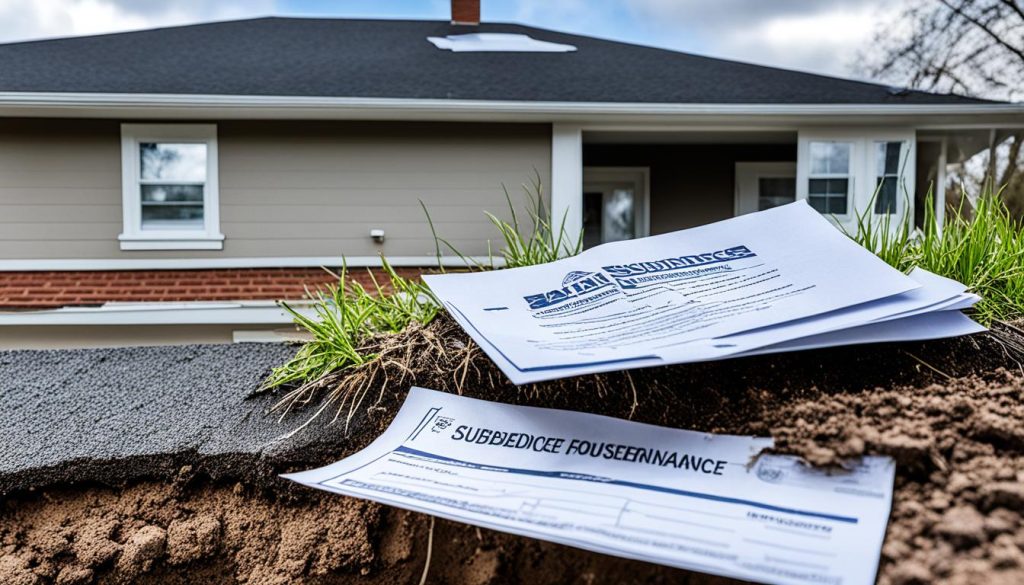
Making a Subsidence Claim
If your home is hit by subsidence, making a claim is key to fixing the problem. But, it can be a tricky process with possible delays or disagreements. We’ll help you through the claim steps, making sure you have the right documents and understanding the challenges ahead.
Documenting the Subsidence Damage
First, document the damage to your property well. This means:
- Taking clear photos of the damaged spots, like cracks or uneven floors.
- Getting a professional survey from an engineer or surveyor to assess the damage and its cause.
- Recording any repairs or temporary fixes you’ve done, like underpinning.
Submitting the Subsidence Claim
With your documents ready, you can send your claim to your insurance. This usually involves:
- Telling your insurance about the subsidence.
- Sharing the documents, including the survey and repair records.
- Working with the insurance’s assessment, which might mean an inspection by their surveyor.
Potential Delays and Disputes
Subsidence claims can be tricky and might lead to delays or disagreements with your insurer. This can happen because of:
- Figuring out what caused the subsidence, which affects your policy.
- Disagreements on how bad the damage is or the repair costs.
- Delays in the insurer’s assessment or approval.
If you face delays or issues with your claim, stay patient and keep pushing. You might need to work more with your insurer or get help from a claims management service for a fair and quick solution.
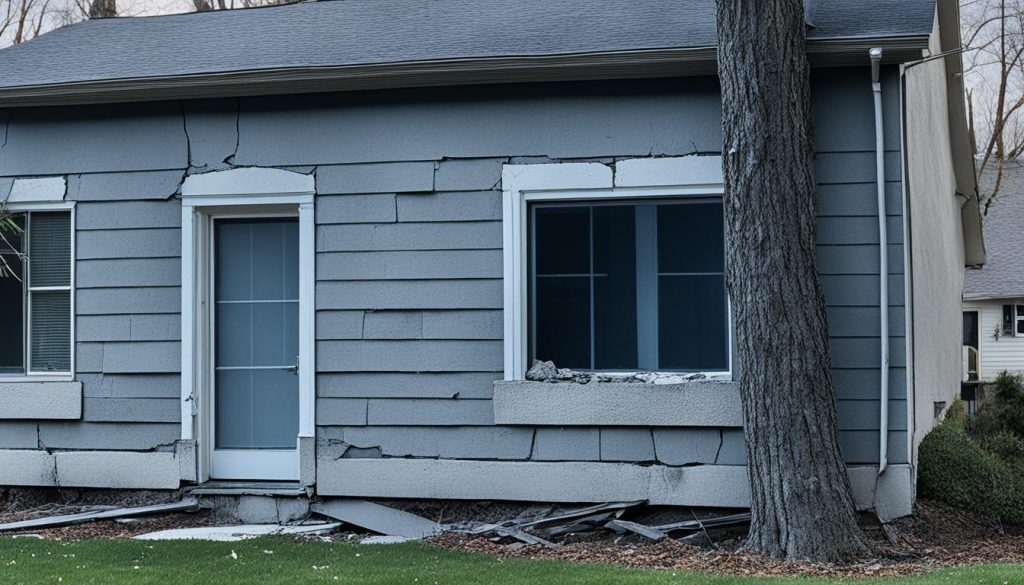
| Claim Aspect | Details |
|---|---|
| Documenting Subsidence Damage |
|
| Submitting the Subsidence Claim |
|
| Potential Delays and Disputes |
|
Preventive Measures and Subsidence Management
Home insurance can cover subsidence, but it’s wise to act early to prevent or manage it. Homeowners should watch for subsidence signs and take steps like maintaining drainage and controlling tree growth. This helps protect their homes.
Monitoring and Repairing Subsidence Damage
It’s key to keep an eye on your property for subsidence signs. Look for cracks, uneven floors, or structural changes inside and outside your home. Also, check the foundations, drains, and trees for issues that could cause subsidence.
If you spot subsidence, act fast. This might mean fixing cracks, strengthening foundations, or underpinning the property. A qualified surveyor or structural engineer can guide you on the damage’s extent and how to fix it.
Preventive steps can lower subsidence risks. These include:
- Keeping a good drainage system to keep water away from the foundations
- Pruning or removing trees and shrubs near the foundations
- Ensuring the soil is well-drained and not too wet
- Checking and fixing any cracks or structural problems
By being proactive with subsidence prevention and management, homeowners can reduce damage risks. This might also help avoid expensive repairs or insurance claims.
Conclusion
Home insurance in the UK for subsidence can be complex. Many standard policies offer some protection. However, the coverage and how it addresses subsidence can vary a lot.
Homeowners should know the risks of subsidence in their area and its signs. They should also look into insurance options. By watching over their property, taking steps to prevent problems, and checking their insurance, they can protect their investment.
FAQ
Are there certain areas of the UK that are more prone to subsidence?
Yes, some parts of the UK face a higher risk of subsidence. Soil type, geology, and groundwater levels play a part in this. Homeowners should look into their area’s subsidence history and risks to understand the threats to their property.
What are the signs of subsidence in a property?
Signs of subsidence include cracks in walls, uneven floors, and doors and windows that stick. Homeowners should watch for any changes that might show subsidence is happening.
What additional cover options are available for subsidence-prone properties?
In areas at higher risk of subsidence, homeowners can buy extra cover. This could be more subsidence excess or deductible limits. These options give better protection against the costs of fixing subsidence damage.
How do I make a claim for subsidence-related damage?
To claim for subsidence damage, homeowners need to contact their insurance company. They’ll need to provide proof of damage and any repair work done. The claims process might take longer because subsidence issues are complex.
What preventive measures can I take to manage subsidence?
Homeowners can prevent subsidence by doing regular checks on their property, keeping drainage systems working well, and watching tree growth near the house. These steps can help spot problems early and might lower repair or insurance claim costs.


